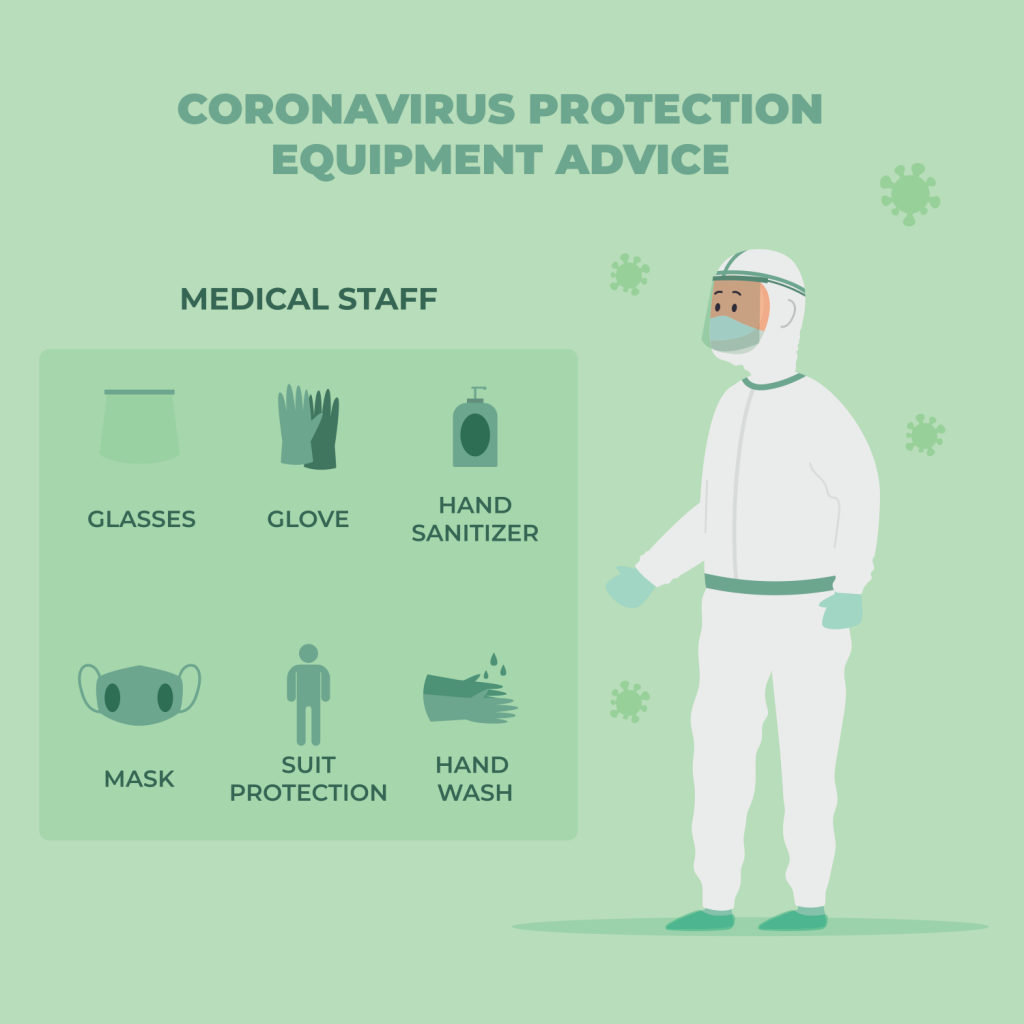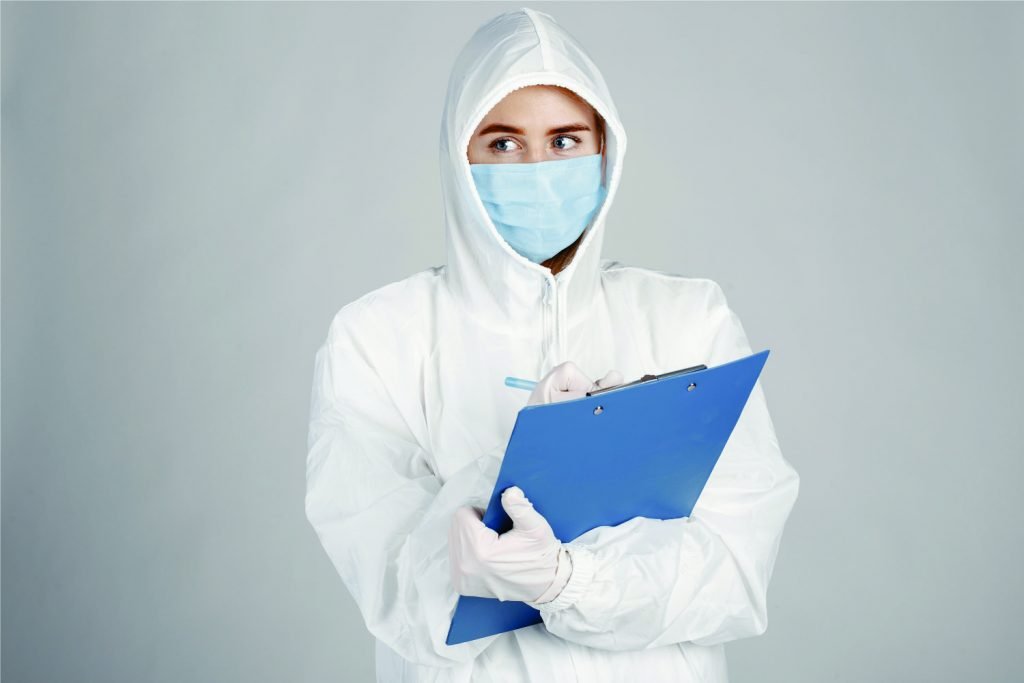Personal protective equipment is also known as PPE. This is equipment that protects users from safety risks or health awareness at work. There are different types of PPE available including coveralls, gowns, face shields, masks, goggles, and many more. The PPE wear purpose is protecting users from infection.
What is Personal Protective Equipment?
As it is stated before in the personal protective equipment definition above; PPE is purposely to reduce exposure to various hazards. There are many examples of PPE that depend on the environmental condition, the body part to protect, and the hazard type. This article will allow you to know more about selecting the appropriate PPE for different circumstances, maintaining and proper use of PPE, and personal protective equipment examples.
Who Needs Personal Protective Equipment?

Healthcare workers and patients should wear PPE to limit the infection and contagious spreading. Patients need to wear a facemask when they are being evaluated by a health worker. Examples of Personal Protective Equipment also recommended to use if a person is suspected or probably confirmed with Covid-19, have significance with people who consider to have a fever or known with the acute respiratory symptom. Facemask is an effective personal protective equipment medical to limit the spreading of the Covid-19 virus.
Types of Personal Protective equipment
Here are examples of personal protective equipment list types that you can wear when you need protection at work.
- Head and neck. Industrial safety helmets, hairnets, firefighter helmets.
- Eyes. Face shields, goggles, safety spectacles, face screen, visor.
- Ears. Canal caps, earmuffs, and earplugs,
- Hands and arms. Gloves, gauntlets, and arm sleeve cover.
- Feet and legs. Safety boots and shoes.
- Respiratory protection. Cartridge, half or full face, airline, and disposable.
- Whole-body. Disposable overall, aprons, and chemical suits.
CDC Recommendation of PPE for Covid -19
The epidemiologic suggests that Covid – 19 transmitted from droplet inhalation contains virus when infected patients coughing, sneezing, or talking. Personal protective equipment defines to limit the reduction of infection risks. CDC recommendation to wear PPE below when must contact with patient or Covid-19 or when go outside:
- Eye protection such as safety glasses, face shields, or safety goggles
- Face masks N-95 or equivalent or higher respirator level.
- Long sleeves gowns/ surgical apron
- Surgical mask
- Disposable gloves

About the specific exposures into Covid-19, it is good things when you follow these below:
- Wash hands with soap and running water for at least 20 seconds frequently. If soap and water are unavailable, use an alcohol-based hand sanitizer.
- Avoid touching face area such as mouth, eyes, and nose with dirty and unwashed hands
- Keep distance from patient or suspected patient and sick people
- Stay at home if possible
- Cover your mouth or wear masks and practice good respiratory etiquette when coughing or sneezing.

How to Put PPE
With the pandemic of the coronavirus in 2020, it is important to use proper precautions of infection control in a health care setting. It is best to train workers with training to put or remove PPE. There are various methods to put and remove PPE. Consider the guidelines from the institution and CDC to wear PPE. Following the instruction and practice appropriately is critical.
- Identify proper PPE to wear. If you wear a gown, ensure the size is correct.
- Do hand hygiene use hand sanitizer and wash hand
- Put the isolation gown. The other person may need assistance wear PPE
- Put mask N-95 to filtering face respirator or higher. Ensure both nose and mouth are protected well. Do not wear the face mask/respirator under the chin or store in scrubs pockets
- Put the goggles or face shields
- Put the gloves
How to take off PPE
- Remove gloves
- Remove gown
- After exiting from the patient room, perform hand hygiene
- Remove goggles or face shield
- Remove respiratory
- Perform hand hygiene after removing the face mask/ respiratory.
Maintenance of personal protective equipment should be done properly. PPE must keep well in storage when not in use. If it is reusable, clean in a proper way, follow the manual instruction to clean PPE, and store it in dry, good air condition.
Consideration to Select PPE

Before you buy personal protective equipment, there are main questions you need to follow to choose the proper one. First, who needs protection from exposed hazards and from what? Second, is the duration of exposure from hazard? And the last, how much they will be exposed from. When choosing PPE, several things need to be considered.
- Choose PPE that fits with the user. Consider the weight of PPE, size, and fitting. This will determine conformity to wear.
- The PPE items should be chosen based on the employer hazard and specific job duties
- Change the gloves if the gloves are torn or visibly contaminated with blood or body fluids
- Choose a PPE product that is marked and registered with 2018 regulations and guidance for health and safety professional standards.
- If the PPE worn is more than one item, then ensure that all parts can wear together. For example, wearing safety glasses can disturb the respirator seal and cause leaks. Ask the recommended list of personal protective equipment items to wear together.
- Instruct and guide people on how to wear PPE appropriately. Wearing PPE needs careful attention and direction. For example, guide people to remove hand gloves without contaminating skin. Tell them why it is needed, when they need to use it and the restrictions.

During the pandemic of Covid-19, the business of personal protective equipment is gaining momentum. People are recommended to wear surgical masks when they leave home to protect themselves from infection of Covid-19. The biggest manufacturer supplies its product personal protective equipment in the hospital and for private use.
All of chain business and organizations that are involved in production, distribution, supply, and marketing of PPE have the same responsibilities as personal protective equipment companies. They need product approval, ensuring the product conforms to regulation. The PPE business has tight regulations as it related to health risks. The use of personal protective equipment should be appropriate with risks that involved and conditions where the risks possibly occurred.

